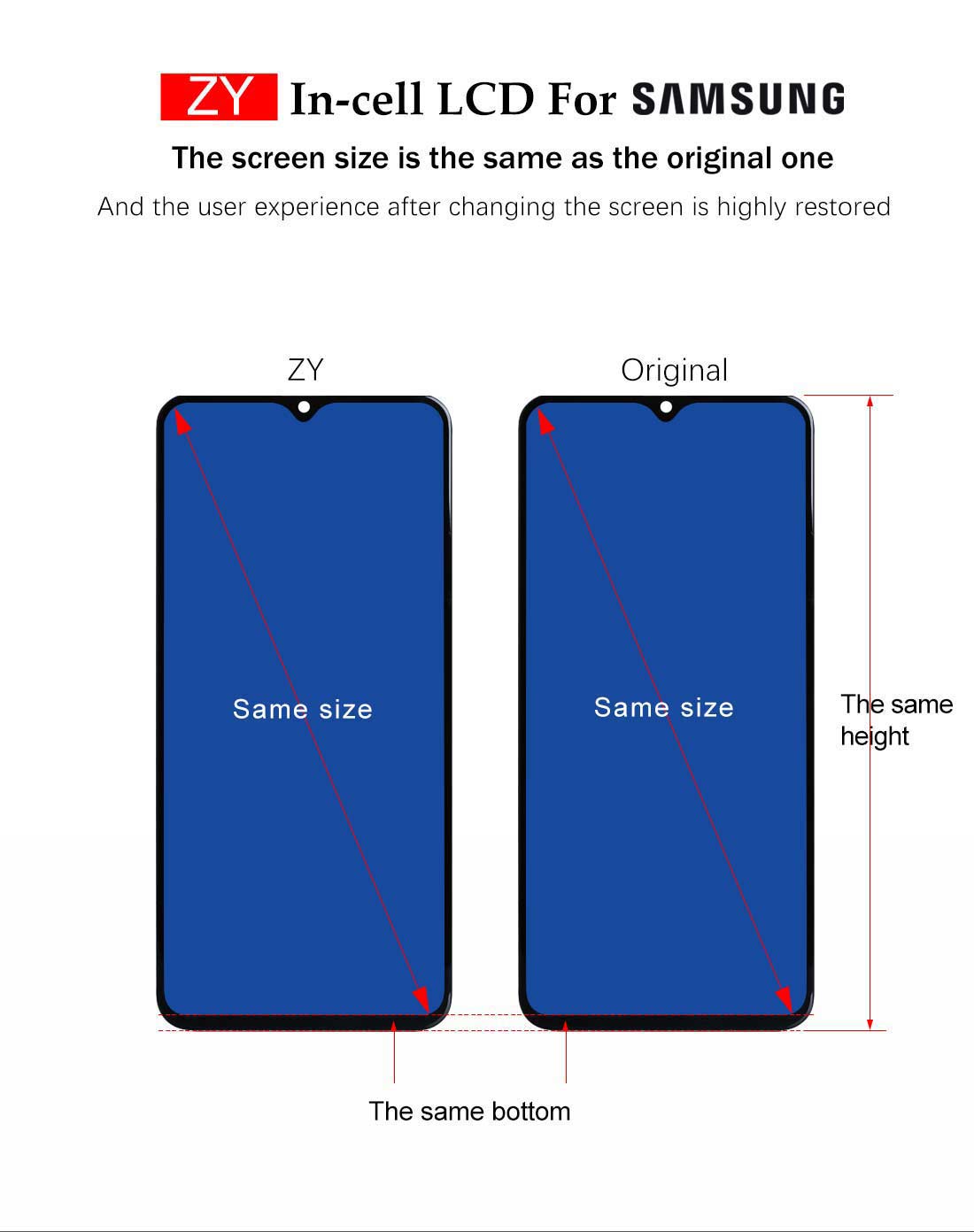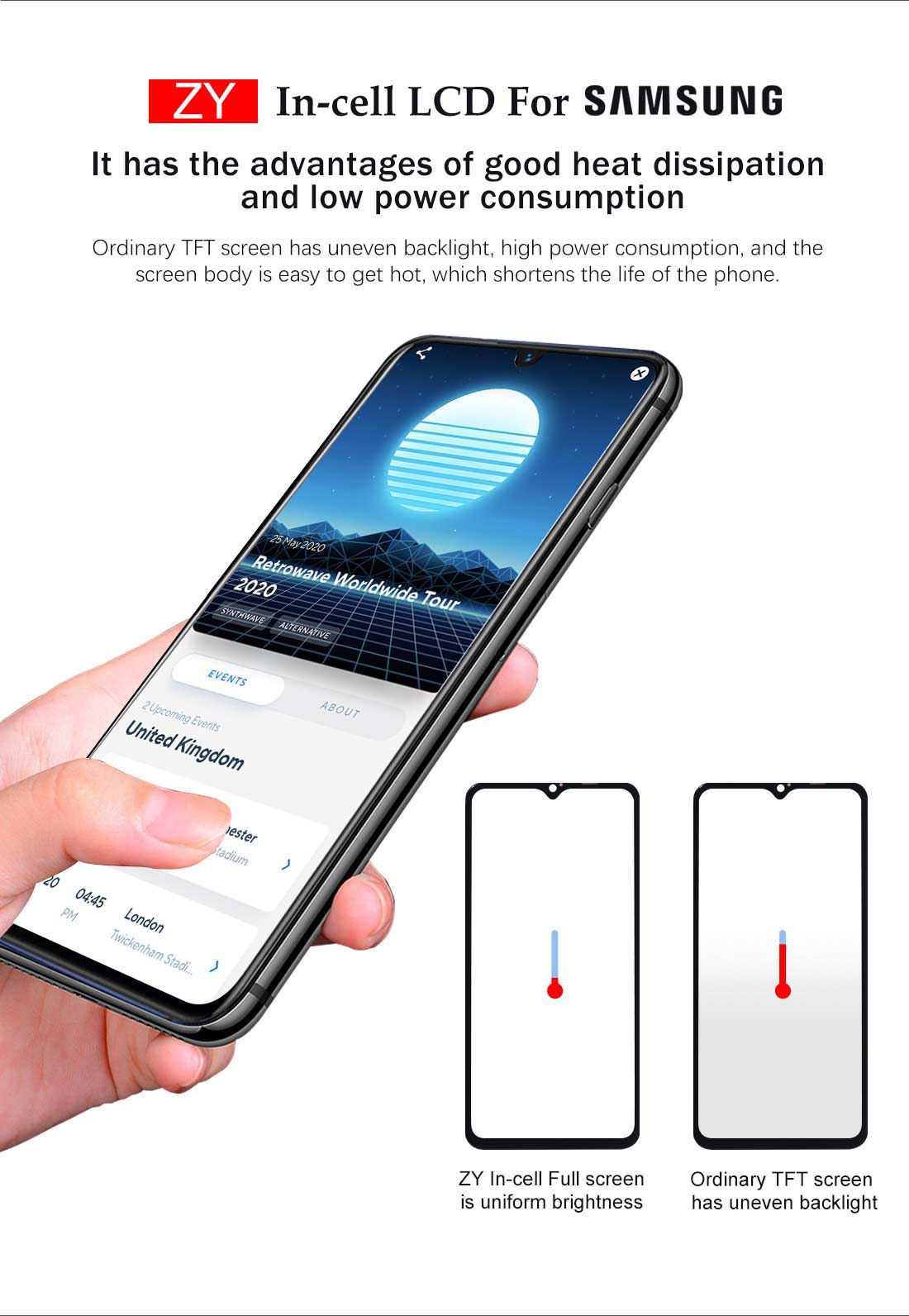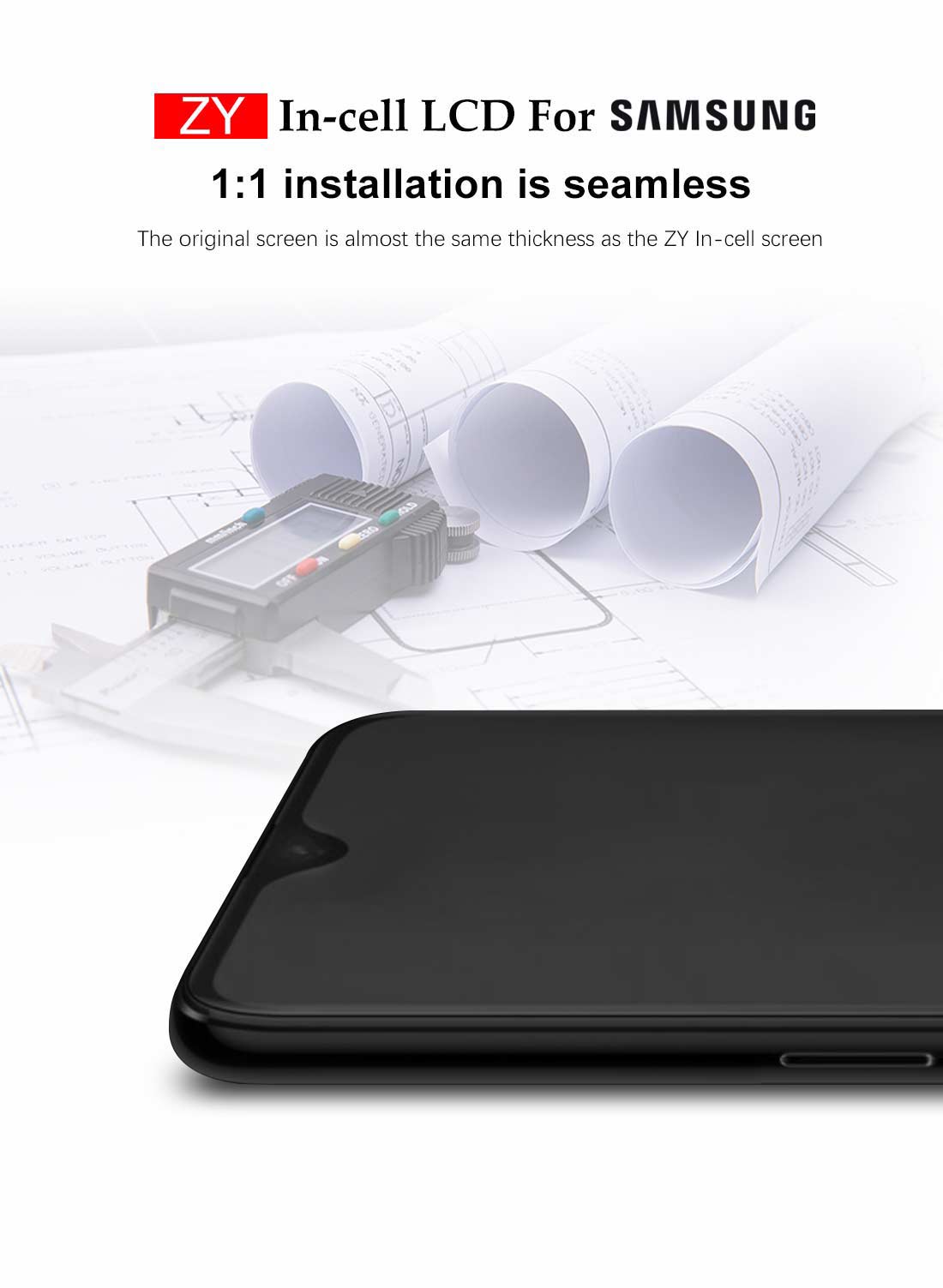
In the development history of Samsung's after-sales maintenance screen, it has experienced three stages of original OLED, TFT LCD and In-cell LCD. OLED display effect is good, but the price is expensive. TFT LCD manufacturing costs are reduced, but the screen is thicker, consumes a lot of power, and the standby time is reduced after changing the screen. Samsung In-cell LCD has the advantages of high quality and low price and has gradually become one of the mainstream products in the Samsung mobile phone repair industry.

OLED
Samsung OLED is an original screen material, and the Samsung S series repair screens basically use OLED original screens for repair and replacement. Due to the difficulty and high cost of Samsung OLED copy screen research and development, there are almost no suppliers in the Samsung mobile phone aftermarket. Samsung OLED screens mostly come from the original disassembled screens. Although the price is high, it does not change the user experience after changing the screen. Samsung OLED repair screens are mainly used in Samsung curved screens and other high-end models.
The operating temperature of OLED displays can be as low as -40ºC (-40ºF) and as high as 85ºC (185ºF). TFT LCD has poor performance below -20ºC (-4ºF) and above +70ºC (158ºF). OLED displays provide faster response times. The OLED display is estimated to be less than 0.01 milliseconds (milliseconds). The TFT LCD module is about 15 mS. That is milliseconds. The human eye blinks every 300 to 400 milliseconds. There are 86,400,000 milliseconds in a day. The eye can hardly detect the difference of 15 mS consciously, but the brain can tell the difference. But OLED has a low-frequency PWM splash screen, which is more harmful to eyes than LCD, and it is obvious in the case of insufficient light at night.

In-cell LCD
In-cell LCD has the advantages of good heat dissipation and low power consumption, and the thickness is only half of that of ordinary TFT LCD. Its price is cheaper than OLED, and it's quality and display effect are better than ordinary TFT LCD, making it the most cost-effective Samsung replacement screen. ZY In-cell LCD's ultra-high pixel density Retina screen, the display effect is non-grainy. The screen-to-body ratio is the same as the original one, and the visual experience will not be affected after changing the screen. The ZY In-cell LCD cable structure is close to the original, low heat dissipation performance, and strong anti-interference ability. ZY In-cell LCD for Samsung mobile phones also has automatic dimming and anti-blue eye protection functions.

In-cell screens are also called “premium copy screens”. These are faithful copies of the original screens, or touch function is incorporated in the LCD. This same technology is also used with OEM New screens. The In-cell technology LCD is thinner than a regular LCD plus there will be no panel crack issues during the installation. In the mobile phone, In-cell LCD is divided into IPS In-cell LCD, LTPS In-cell LCD, and Retina In-cell LCD. IPS (In-Plane Switching) is a technology of LCD. The advantages of the IPS screen are high viewing angle, fast response speed, and accurate color reproduction. It is a high-end product in LCD panels. LTPS is a new technology for LCD. LTSP-LCD can be used to drive LCD (liquid crystal) screens and OLED (organic light-emitting diode) screens. LTPS-LCD driven screens have the advantages of fast response speed, high resolution, and low power consumption. When Apple introduced the iPhone in the early years, it claimed that the Retina screen was actually an LTPS-LCD screen.
TFT LCD
The ordinary TFT LCD screen has an uneven backlight, high power consumption, and the screen body is easy to get hot, which shortens the life of the phone. Because the thickness of the TFT LCD is too thick, the Samsung mobile phone after changing the screen will feel rough and scratchy when held in the mobile phone. This is because the TFT LCD screen is too thick and there are gaps after installation. The biggest advantage of TFT LCD is its low price, which is lower than the in-cell LCD and OLED.
Summary
Incell LCD suitable for Samsung mobile phones has the advantages of long life, low cost, and basically no harm from low frequency pwm stroboscopic. Using LTPS LCD can improve response time and display effect. Incell LCD is the best choice for Samsung mobile phone aftermarket.

Come to HENGWEI ye and choose what you like
Mobile screen,We create a series of high-quality mobile screens for you
